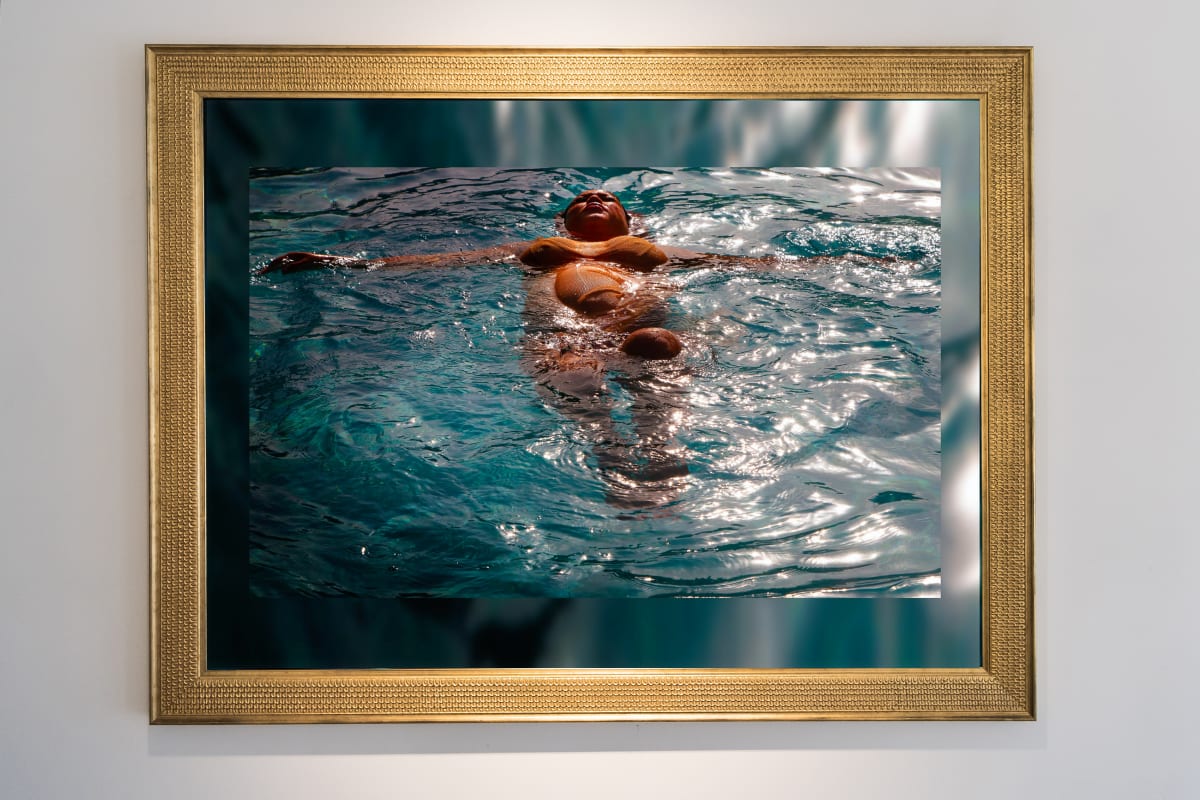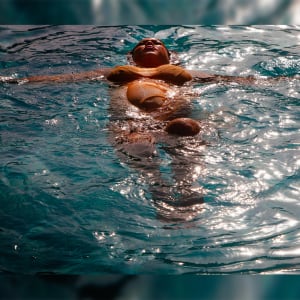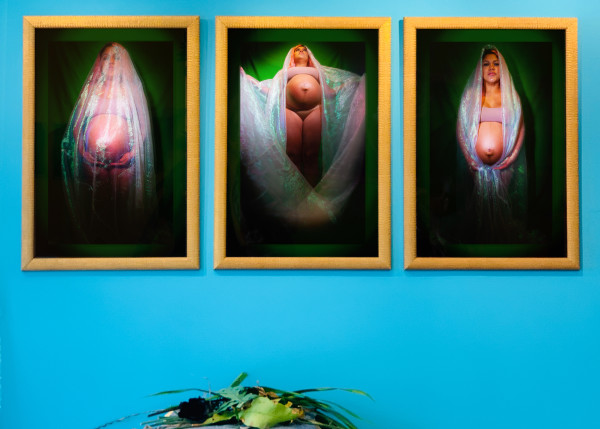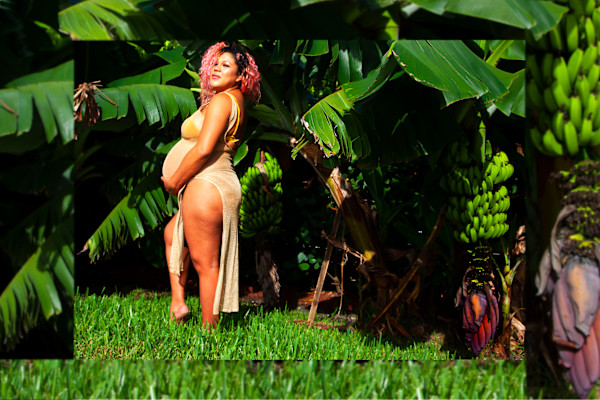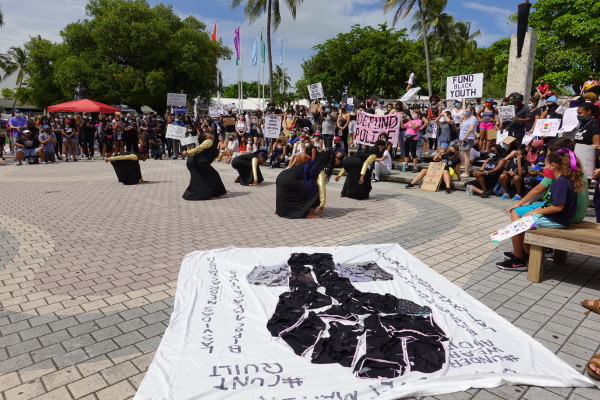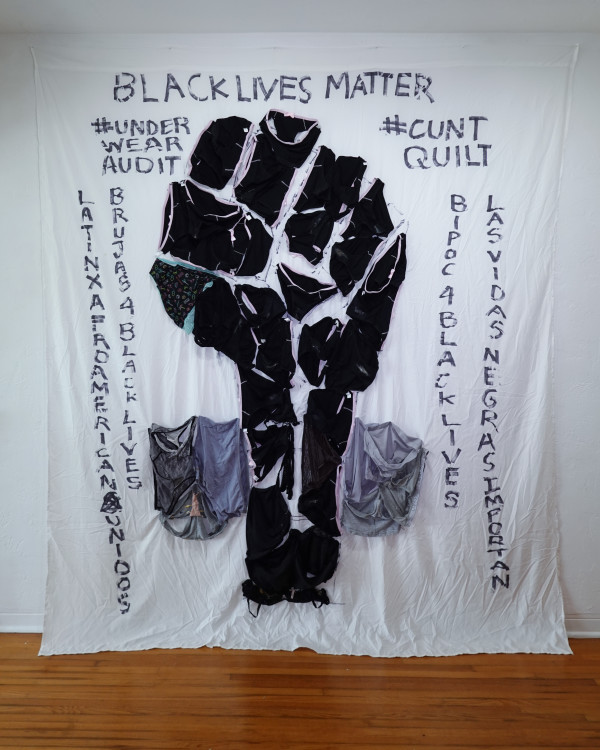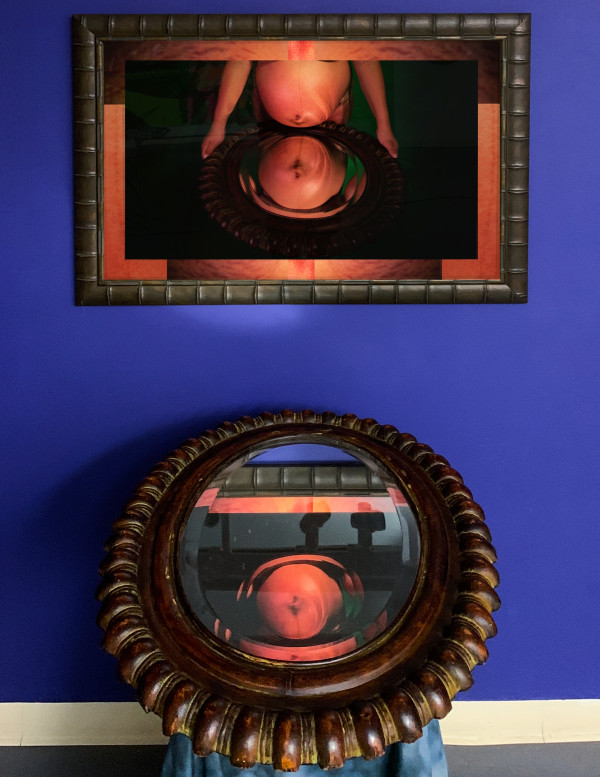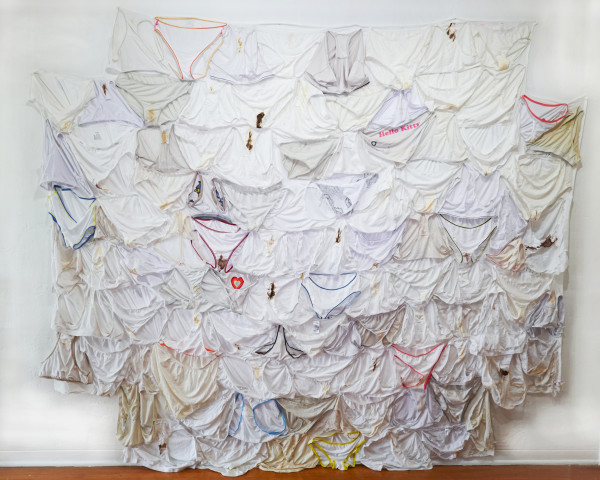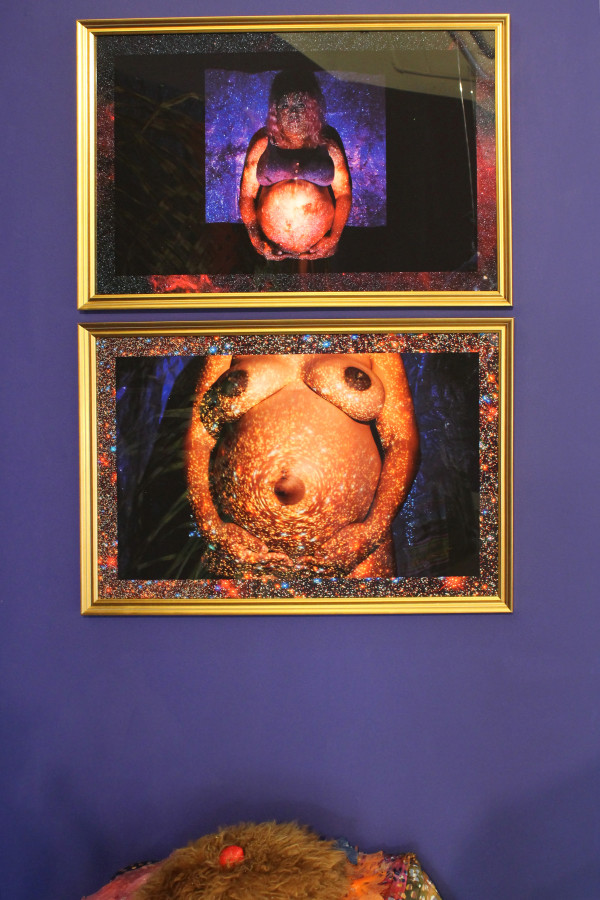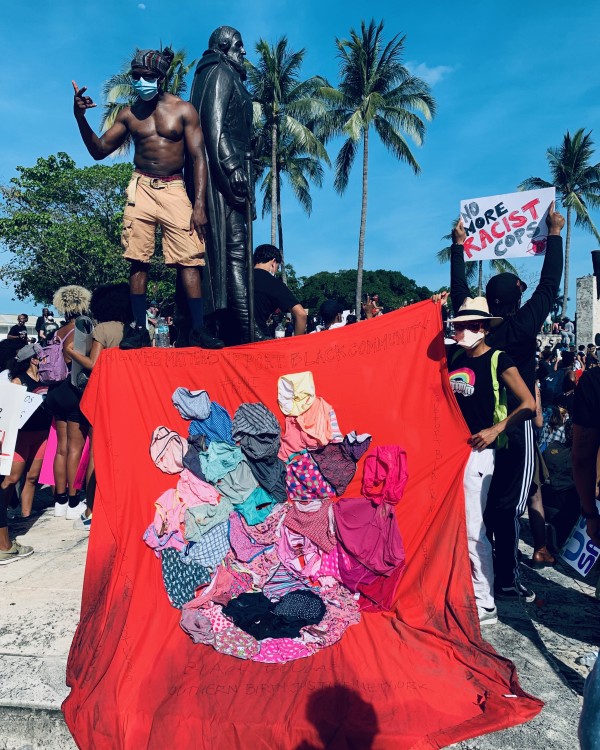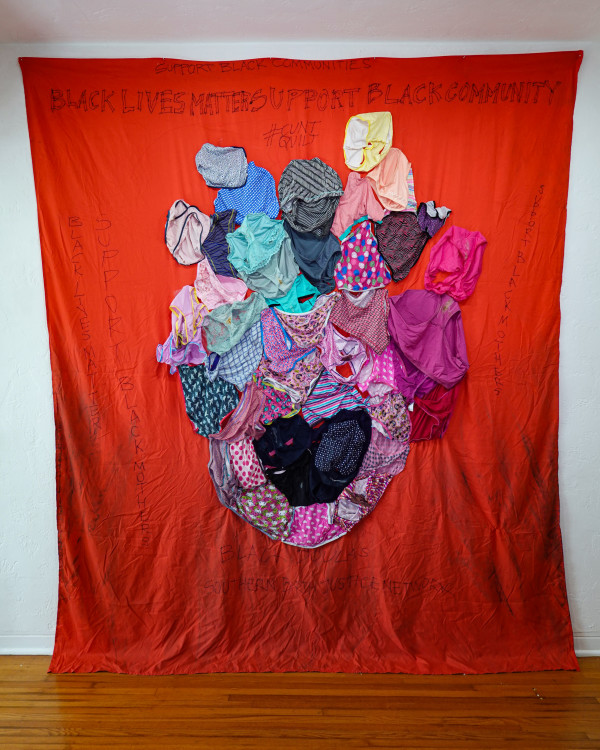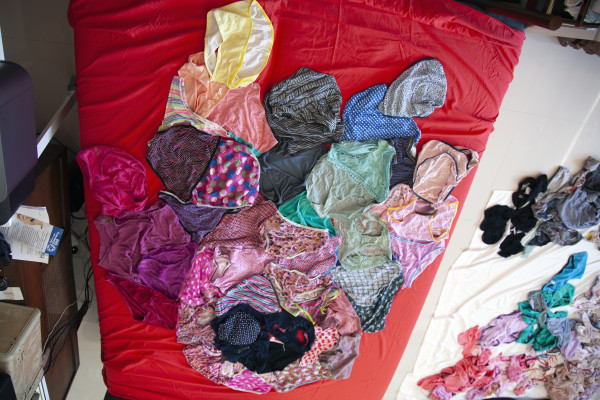Yemaya (Broken Water) is a photograph of a golden figure breaks the surface of a chiaroscuro aqua pool of water whose meniscus is disturbed by turbulent currents surrounding a pregnant woman’s body floating in a crucifix position. In Caribbean liberation mythology, the Orisha/ Santeria goddess Yemaya is a mother of all living things and the owner of seas and water who is called upon during labor when the ‘water breaks’. Depicted scintillating in the healing and cleansing power of water, shrines to Yemaya are commonly found in the doorways of immigrant community homes where they are integrated into birthing rituals performed by Doulas. Yemaya is a powerful Yoruba figure whose role in Caribbean liberation mythology offers transcendence from slavery's stigmas and the restraints of traditional, Western, Eurocentric family structures. In the myth, Yemaya cleanses Chango of his womanizing, violent ways when she reminds the drowning warrior to forgive himself and his birth mother from whom he feels abandoned. Yemaya clarifies: "Chango has two mothers, the one who birthed him and the one who raised him" as a way to embolden biological and biographical families with ancestral survival strategies.
The Linea Negra series photographs (2008-present) documents the inception of gender, power and race structures from slogans, slang, maxims and "old wives tales" to internalized, institutional violence. The works celebrate the melanin line appearing during gestation (most prominent in women of color) as a biological pieta; the first biographical mark on the procreative body and the first sign of our creative humanity.
- Subject Matter: Pregnant Figure
- Collections: Linea Negra photographs

